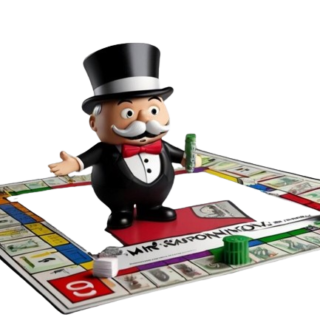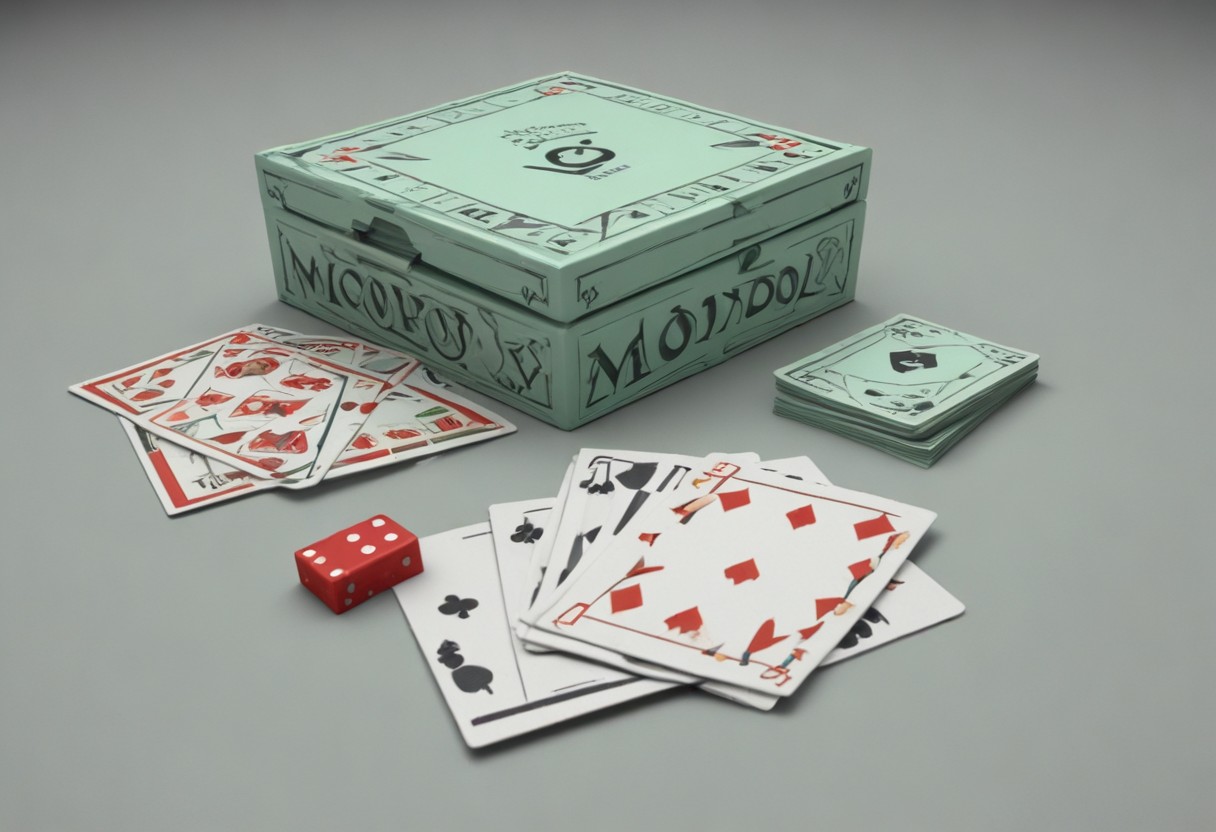Rules of Electronic Monopoly
Electronic Monopoly, also known as Monopoly Electronic Banking Edition, brings a modern twist to the classic Monopoly game by replacing cash transactions with electronic banking and adding new features. Here’s a guide to the rules of Electronic Monopoly:
Electronic Monopoly blends the classic thrill of property acquisition with the modern convenience of electronic banking, creating an immersive and dynamic gaming experience for players of all ages
Objective
- The objective of Electronic Monopoly is the same as classic Monopoly: to bankrupt your opponents and be the last player remaining with money and assets.
Setup
- Game Board: Lay out the game board and place the Banker Unit and Title Deed cards nearby.
- Banker Unit: The Banker Unit is used to manage all financial transactions in the game.
- Tokens: Each player chooses a token and places it on the Go space.
- Electronic Banking Units: Each player receives an Electronic Banking Unit and a bank card.

Game Play
- Roll the Dice: The player with the highest roll goes first. Play then proceeds clockwise.
- Move: Move your token around the board according to the number rolled.
- Property Ownership: If you land on an unowned property, you have the option to buy it.
- Rent and Property Development: When opponents land on your properties, they must pay you rent. You can also develop your properties by adding houses and hotels, which increase the rent.
- Electronic Banking: All transactions, including buying properties, paying rent, and trading, are conducted using the Electronic Banking Unit and bank cards.
- Chance and Community Chest Cards: When you land on these spaces, you draw a card that can have various effects on the game.
- Winning the Game: The last player remaining with money and assets wins the game.
Differences from Classic Monopoly
- Electronic Banking: Cash transactions are replaced with electronic banking using the Electronic Banking Unit and bank cards.
- Speed Die: Some versions of Electronic Monopoly include a Speed Die, which can accelerate the game by allowing players to move more spaces.
- Property Auctions: If a player lands on an unowned property and chooses not to buy it, it is auctioned to the highest bidder.
Conclusion
Electronic Monopoly offers a modern take on the classic Monopoly game, adding new elements such as electronic banking and property auctions while retaining the core gameplay that has made Monopoly a timeless favorite. Whether you’re a fan of the original game or looking for a fresh twist, Electronic Monopoly is sure to provide hours of fun and excitement.
What comes with the game
Here’s a table outlining the components included in a standard Monopoly game:
| Component | Description |
|---|---|
| Game Board | The board consists of 40 spaces representing properties, railroads, utilities, and special spaces like Chance and Community Chest. Players move around the board buying properties and collecting rent. |
| Tokens | Tokens represent players on the board and include classic items like the thimble, top hat, and car. Players choose a token at the beginning of the game. |
| Money | Monopoly money comes in different denominations and is used to buy properties, pay rent, and manage finances throughout the game. |
| Property Deeds | Deeds represent ownership of properties and include information such as purchase price, rent cost, and building costs. Players collect deeds when they buy properties. |
| Houses and Hotels | Players can purchase houses and hotels to increase rent on their properties. Houses are placed on properties to indicate rent increases, and hotels replace houses for higher rent. |
| Chance and Community Chest | These cards are drawn when a player lands on the corresponding space. They contain instructions that can be beneficial or detrimental to the player, such as paying or receiving money, or moving to a different space on the board. |
| Dice | Monopoly uses two six-sided dice for movement around the board. Players roll the dice to determine how many spaces to move on their turn. |
| Banker’s Tray | The banker manages the game’s money and properties. The banker’s tray includes compartments for the different denominations of money and property deeds. |
| Rules | The rulebook outlines how to play the game, including setup, gameplay, and winning conditions. It also includes information on optional rules and variations. |
| Mortgaged Property Cards | When a property is mortgaged, a card is placed on the property to indicate that it cannot collect rent until the mortgage is paid off. Players can mortgage properties to raise funds. |
| Houses and Hotels Tokens | These tokens are used to represent houses and hotels when purchased by players. They are placed on properties to indicate the level of development and the increased rent value. |
FAQ
In Electronic Monopoly, electronic banking is managed using the Electronic Banking Unit and bank cards. Players use the unit to make transactions, such as buying properties, paying rent, and trading, by swiping their bank cards.
Yes, Electronic Monopoly introduces electronic banking, property auctions for unowned properties, and the possibility of using a Speed Die, which can accelerate gameplay.
No, the electronic banking unit is an integral part of Electronic Monopoly and is necessary for managing all financial transactions in the game
Yes, Electronic Monopoly can be suitable for younger players, as the electronic banking system simplifies transactions and the game can be played at a faster pace with the Speed Die. However, it is recommended to check the age recommendation on the box.
Ready to roll the dice and take on the challenge of becoming the ultimate property tycoon?
Set up the board, and let the wheeling and dealing begin!
Time to buy, sell, and trade your way to victory in the timeless game of Monopoly.
Who will build the biggest empire and bankrupt their opponents? Find out now by starting your Monopoly adventure


